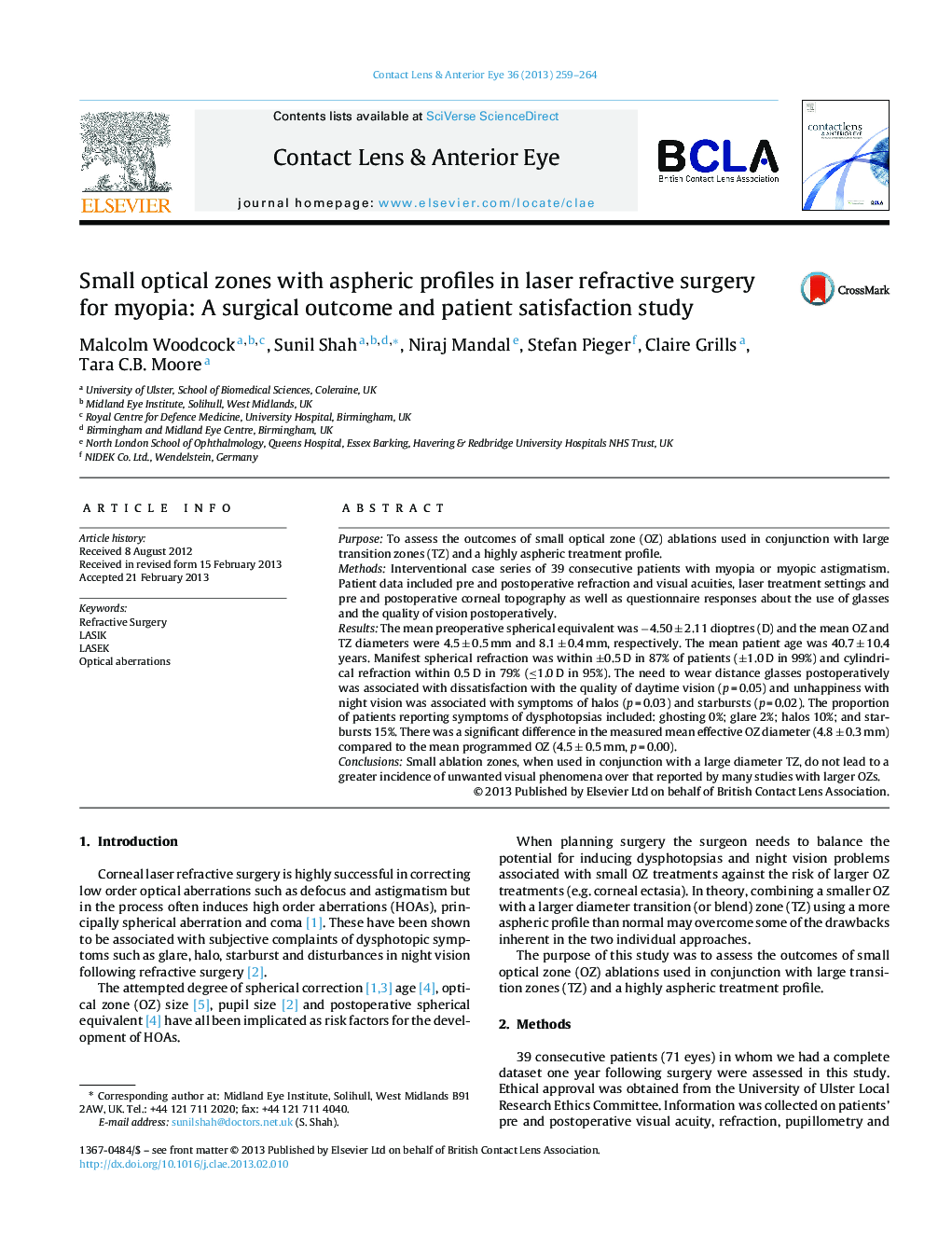| کد مقاله | کد نشریه | سال انتشار | مقاله انگلیسی | نسخه تمام متن |
|---|---|---|---|---|
| 2697341 | 1143902 | 2013 | 6 صفحه PDF | دانلود رایگان |

PurposeTo assess the outcomes of small optical zone (OZ) ablations used in conjunction with large transition zones (TZ) and a highly aspheric treatment profile.MethodsInterventional case series of 39 consecutive patients with myopia or myopic astigmatism. Patient data included pre and postoperative refraction and visual acuities, laser treatment settings and pre and postoperative corneal topography as well as questionnaire responses about the use of glasses and the quality of vision postoperatively.ResultsThe mean preoperative spherical equivalent was −4.50 ± 2.11 dioptres (D) and the mean OZ and TZ diameters were 4.5 ± 0.5 mm and 8.1 ± 0.4 mm, respectively. The mean patient age was 40.7 ± 10.4 years. Manifest spherical refraction was within ±0.5 D in 87% of patients (±1.0 D in 99%) and cylindrical refraction within 0.5 D in 79% (≤1.0 D in 95%). The need to wear distance glasses postoperatively was associated with dissatisfaction with the quality of daytime vision (p = 0.05) and unhappiness with night vision was associated with symptoms of halos (p = 0.03) and starbursts (p = 0.02). The proportion of patients reporting symptoms of dysphotopsias included: ghosting 0%; glare 2%; halos 10%; and starbursts 15%. There was a significant difference in the measured mean effective OZ diameter (4.8 ± 0.3 mm) compared to the mean programmed OZ (4.5 ± 0.5 mm, p = 0.00).ConclusionsSmall ablation zones, when used in conjunction with a large diameter TZ, do not lead to a greater incidence of unwanted visual phenomena over that reported by many studies with larger OZs.
Journal: Contact Lens and Anterior Eye - Volume 36, Issue 5, October 2013, Pages 259–264